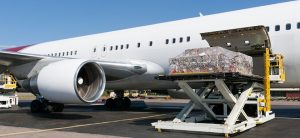When you examine Singapore’s air freight success, you’ll find geography at its core. Within a 7-hour flight radius of half the world’s population, this city-state leverages its position at the intersection of major East-West trade routes to remarkable effect. Changi Airport’s connections to 380+ cities worldwide allow businesses to access 90% of global GDP through this single hub. But location alone doesn’t explain Singapore’s logistics dominance—the strategic policies and technological innovations behind this geographic advantage tell the complete story.
The Geographic Advantage: Singapore’s Position at the Crossroads of Global Trade
Singapore’s strategic location at the heart of Southeast Asia represents its primary competitive advantage in the global air freight industry. You’ll find this island nation positioned at the nexus of major East-West trade routes, with over 50% of global shipping passing through nearby sea lanes.
This geographical advantage translates directly to air freight service efficiency. Singapore’s Changi Airport sits within a 7-hour flight radius of 3.8 billion people—half the world’s population. You’re looking at a hub that connects to 380+ cities across 100+ countries, allowing businesses to access markets representing 90% of global GDP within 24 hours of dispatch.

Changi Airport’s Evolution Into a World-Class Air Cargo Hub
Leveraging this geographic advantage, Changi Airport has transformed from a regional transportation node into one of the world’s premier air cargo facilities over the past five decades.
You’ll find Changi processing over 2 million tonnes of cargo annually, with its 24/7 operations supporting over 100 airlines connecting to 380+ cities. The airport’s $182 million ALPS (Airfreight Logistics Park Singapore) facility has expanded handling capacity by 26%.
Changi’s success stems from Singapore’s proactive infrastructure investments, streamlined customs processes, and cutting-edge tracking systems. The Civil Aviation Authority’s 2025 masterplan prioritizes automation and cold-chain facilities, positioning Changi to capture Asia’s growing high-value pharmaceutical and perishables markets.
Policy Innovation: How Singapore Created a Business-Friendly Logistics Ecosystem
While Changi’s infrastructure forms the physical backbone of Singapore’s air freight dominance, it’s the country’s innovative policy framework that truly distinguishes it from regional competitors. You’ll find Singapore’s success rooted in its zero-tolerance for corruption, streamlined customs procedures, and strategic free trade agreements with 27 major economies.
The government’s “single window” trade platform reduces documentation processing from days to minutes. Their tax incentives for logistics firms—including 5-10% corporate tax rates versus the standard 17%—have attracted over 650 multinational logistics companies. This ecosystem continues to evolve through regular industry consultations that quickly adapt regulations to market demands.
Future-Proofing: Technology Investments Securing Singapore’s Air Freight Dominance
To maintain its competitive edge in the global air freight landscape, Changi Airport has committed over S$300 million to automation technologies since 2016. This investment funds AI-powered cargo sorting systems that reduce processing times by 37% and blockchain platforms securing documentation across 14 trading partners.
You’ll find Singapore’s SMART Air Cargo initiative deploying predictive analytics that cut aircraft turnaround times from 120 to 85 minutes. These innovations coincide with the Civil Aviation Authority’s regulatory sandbox allowing drone delivery testing within controlled airspace.
Singapore’s digital freight corridor with Schiphol Airport now processes 90% of shipments paperlessly, establishing technology standards other hubs struggle to match.
